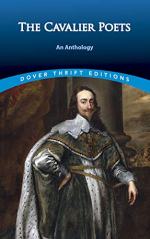|
This section contains 1,723 words (approx. 5 pages at 400 words per page) |

|
Masculinity
The poem offers an answer to a central question: what does it mean to be a man? Early modern English culture was one with profoundly rigid notions about gender roles, particularly in the upper classes (indeed, the working classes often had far more flexible gender relations as a result of the necessity to labor for survival). But among those who did not need to work, there was increasingly a sense that women were ornamental representations of ideal femininity while work and active engagement with the world was for men. This idea would reach a culmination throughout the centuries that followed, but even in the seventeenth century, it was becoming the prevalent mode of gender relations.
And yet early modern masculinity was also very fragile. The country had barely survived a tumultuous century-and-a-half, with its only stability under the reign of England’s first-ever queen to rule...
|
This section contains 1,723 words (approx. 5 pages at 400 words per page) |

|




